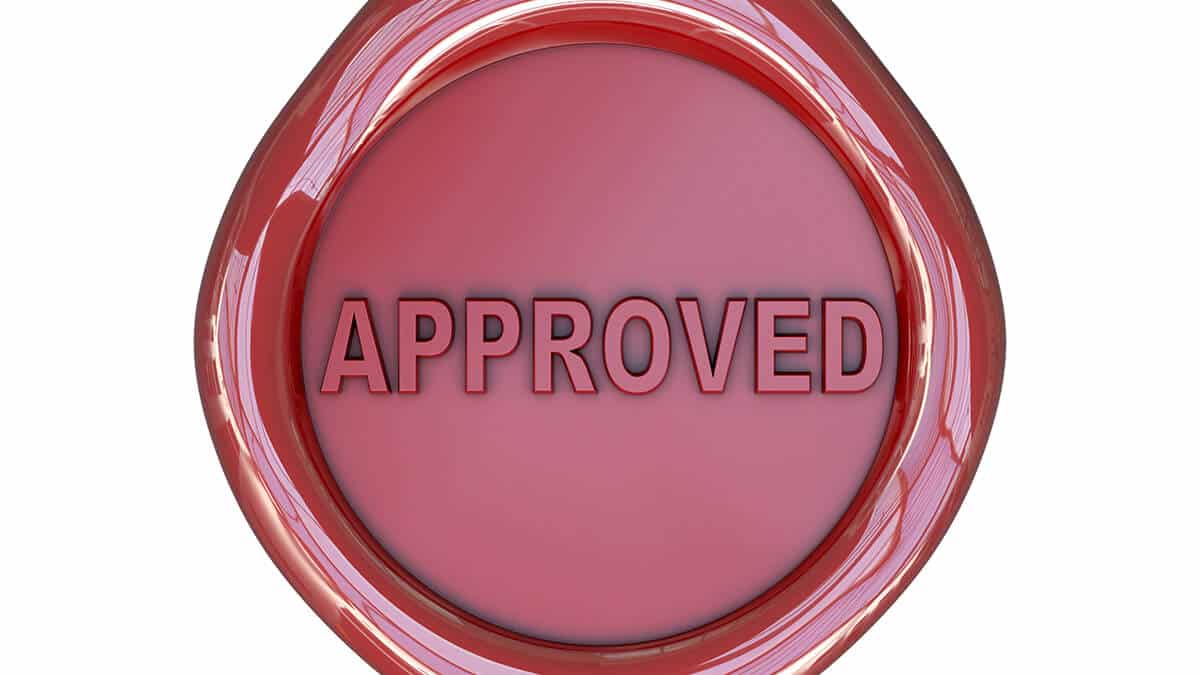In this guide
- What are the short-term borrowing rules?
- Borrowing to invest
- How does SMSF borrowing work?
- Single acquirable asset
- Repair or maintenance versus improvement
- An LRBA from a related party
- What are the ‘safe harbour’ terms?
- Intermediary LRBA update
- Other investments
- When is refinancing allowed?
- COVID-19 issues to consider
- Common questions about SMSF borrowing
In 2007, there was a relaxation of the rules allowing self-managed superannuation funds (SMSFs) to use borrowings to acquire certain assets.
Although these loans were originally allowed for borrowing to invest in shares, restrictions around the rules mean they are now used predominantly for property assets.
Other more recent legislative changes make it possible for SMSFs to acquire property with limited recourse borrowing arrangements (LRBAs) using a holding trust.
Before these changes, there were strict rules around borrowing within an SMSF.
What are the short-term borrowing rules?
Your SMSF can borrow money for a short time if that amount is less than 10% of the fund’s total assets. Those circumstances are:
2026 SMSF calendar
Our free calendar includes due dates for important documents plus suggested dates for trustee meetings and other strategic issues for your SMSF.
"*" indicates required fields
- A maximum of 90 days to meet benefit payments or to pay an outstanding surcharge liability; or
- A maximum of seven days to cover the settlement of security transactions. You can also only do this if you did not think you would need to borrow funds when you bought the securities.
These transactions need to be on an arm’s-length basis – that is, at an appropriate market rate of return.
Borrowing to invest
The only other time you can borrow within your SMSF is to acquire an eligible asset via limited recourse borrowing arrangements (LRBAs). Once again, certain rules apply.
An LRBA involves an SMSF trustee taking out a loan from a lender and purchasing a single acquirable asset (or collection of identical assets with the same market value) with the borrowings.
The asset must be held in a separate holding (bare) trust and any investment returns earned from the asset accrue to the SMSF. Expenses relating to the asset also need to be paid by the SMSF.
In the case of default on the loan, the lender’s rights are limited to the asset held in the separate trust; that is, there is no recourse for the lender to pursue other assets in the SMSF. That’s why these loans are referred to as ‘limited recourse’.
Just like any investment you make within your SMSF, any asset you purchase via a loan needs to be for the sole purpose of providing a retirement benefit to the SMSF members. This also forms part of the SMSF investment strategy, which states how that investment will benefit the overall outcome of the fund.
The investment strategy should explain how the loan will be serviced at the same time as meeting all other fund expenses.
If, for example, the SMSF needs to pay a pension in the future, the investment strategy will outline how it will be paid while servicing the loan or whether the asset will be sold.
An investment strategy would also need to explain why a fund had allocated a significant portion of its funds to an illiquid asset if it had very few other investments.
Both borrowing and investing in property must also be allowed in the SMSF’s trust deed.
How does SMSF borrowing work?
Once an SMSF trustee has identified a single acquirable asset they wish to purchase, their fund can choose to take out a loan from a commercial provider.
It is worth noting that some banks and mortgage providers have loans specifically tailored for SMSFs. Or, in some circumstances, the SMSF can borrow from a related party or a non-bank lender if the arrangement is on an arm’s-length basis, which we will discuss shortly.
Super knowledge is a super power

"*" indicates required fields
Expenses incurred in connection with borrowing and acquiring the asset, such as loan establishment fees, advice costs and stamp duty, can also be paid for from money borrowed via the LRBA.
A holding (bare) trust must be set up to hold the asset and the SMSF trustees must make sure the asset is transferred directly to the trust from the vendor. If, even temporarily, an SMSF trustee obtains title to the asset they will contravene the Superannuation Industry (Supervision) Act 1993.
Some lenders require insurance to be taken out over the asset being purchased via a loan, and the SMSF needs to make sure it has sufficient funds to pay these insurance premiums.
Single acquirable asset
A lot hinges on the definitions of an ‘asset’ and a ‘single acquirable asset’. The Australian Taxation Office (ATO) has issued a ruling (SMSFR 2012/1) that further clarifies this definition and other relevant terms around the borrowing rules and restrictions.
That ruling states:
This ‘single acquirable asset’ definition means that a separate LRBA is required for each individual property title. SMSFR 2012/1 also assists with some definitions around common questions and misconceptions.
For example, SMSF ABC wants to acquire two blocks of land next to each other, with two separate titles, which the owner will only sell as a parcel. However, there is no impediment to the two blocks of land being sold separately at some point in the future. In this case the two blocks of land are not a single acquirable asset and would need to be acquired under two separate LRBAs, with each title of property being held in its own separate holding trust.
However, if there is an entity that unifies a number of separate titles of land then that can sometimes make adjoining land, and what is on it, a single acquirable asset.
For example, if there was a factory constructed across three titles, that factory adds considerable value to the land and is a relevant ‘unifying physical object’, which makes the factory and the land across those three titles a single acquirable asset that could be acquired under a single LRBA. It would be almost impossible to deal or sell one of these three titles separately, due to the structure that straddles all three titles.
The principle of a ‘unifying physical object’ is particularly important when it comes to farms. Even if unifying agricultural activities are being carried out across a number of land titles, unless there is a unifying physical object – such as a piggery across the titles – each land title needs a separate LRBA.
Repair or maintenance versus improvement
SMSFR 2012/1 also provides guidance around what the ATO considers repair or maintenance versus what it considers improvement.
The difference for the SMSF is that it can use monies borrowed under an LRBA for repairs or maintenance of an asset, but borrowed monies cannot be used to fund any improvements to an asset.

Free eBook
SMSF investing essentials
Learn the essential facts about the SMSF investment rules, how to create an investment strategy (including templates) and how to give your strategy a healthcheck.
"*" indicates required fields
However other cash held in the SMSF, such as accumulated funds held by the SMSF or from contributions received, can be used to fund any improvement, provided it does not result in the asset becoming a different asset. The function or use of the asset cannot really change after the improvements are made.
There have been many questions to the ATO over the years about the difference between repair and maintenance and improvements, which prompted SMSFR 2012/1. The ruling defines maintain and repair as follows:
An improvement is defined as follows:
The ATO uses the example of a cyclone, which damages the roof of a house in an LRBA structure. The ATO says that replacement of the entire roof with the modern equivalent is a repair as it is restoring the asset to what it was. If ‘superior materials’ are used it is a ‘question of degree’ as to whether the changes significantly improve the state or function of the asset as a whole.
However, if a second story is added to the house at the time of replacing the roof, that would be considered an improvement.
Even when making improvements SMSF trustees must make sure they do not change the nature of an asset – for example, refitting a residential property to turn it into a commercial hairdressing salon.
Supercharge your SMSF

"*" indicates required fields
If the character of an asset has fundamentally changed the trustee of the SMSF will contravene subsection 67A of the Superannuation Industry (Supervision) Act 1993 which allows limited recourse borrowing arrangements.
An LRBA from a related party
Although the rules were tightened in 2016, you can still borrow to purchase an asset via an LRBA from a related party as defined by the ATO:
Employers who contribute to your superannuation and associates of employers who do so (business partners, companies, or trusts the employer controls, and companies and trusts that control the employer) may also be related parties in some very limited circumstances. This would occur where an agreement exists between the employer and the SMSF trustees. This would be a rare occurrence as contributions made to super are in almost all cases done through an agreement between the employer and the individual member of the fund, and not in their capacity as trustee.
The ATO issued a compliance guideline to help SMSFs understand arm’s-length terms for LRBAs – Practical Compliance Guidelines (PCG) 2016/5 – Income tax arm’s-length terms for limited recourse borrowing arrangements established by self-managed superannuation funds.
If an LRBA is not set up and maintained on an arm’s-length basis the SMSF may be required to pay non-arm’s-length income tax, or NALI, which means the income is taxed at 45% instead of 15%. It can also result in any realised capital gain being taxed at 45% as well.
What are the ‘safe harbour’ terms?
PCG 2016/5 also explains the ‘safe harbour’ terms on which SMSF trustees can structure their LRBAs on an arm’s-length basis. That is, if the SMSF trustees enter into and maintain a related party LRBA in line with the safe harbour terms set out by the ATO, then the SMSF will not be subject to NALI.
Those terms specify the interest rate the loan must be set at, which is the Reserve Bank of Australia Indicator Lending Rates for banks providing standard variable housing loans for investors published for May, immediately prior to the start of the relevant financial year.
The safe harbour terms also dictate that the rate can be fixed or variable, the terms of the loan, the loan to market value ratio (a maximum 70% for both commercial and residential property), the security and nature (both principal and interest) and frequency of repayments.
Even if an LRBA does not meet all the safe harbour terms it does not necessarily mean the arrangement is not on an arm’s-length basis, just that the trustees would have to prove to the ATO how it was an arm’s-length transaction.
You can view the safe harbour terms on the ATO website. Take note that these change as at 30 June of each year.
Intermediary LRBA update
A new legislative instrument registered in May 2020 made it easier for SMSFs to acquire property via a limited recourse borrowing arrangement using a holding trust. This could be a slightly easier way for some SMSF trustees to add a real property asset to their fund.
Previously, according to Graeme Colley, executive manager, SMSF Technical & Private Wealth at SuperConcepts, the fund acted as an interposed entity for purposes of the LRBA, so the use of the intermediary just cuts out one step in the transaction.
An intermediary LRBA refers to an arrangement that involves the SMSF, a holding trust and a lender whereby the SMSF borrows funds for an asset indirectly through the holding trustee (a member of the SMSF). The trustee of the holding trust borrows the money from a lender but the SMSF maintains the holding trust’s borrowing.
The legislation has been backdated to apply to intermediary LRBAs established from 24 September 2007 and any established in the future.
Other investments
You can use an LRBA structure to purchase shares. However, those shares need to be considered a single acquirable asset.
A collection of shares in a single company that are identical, have the same market value and are bought together at the same time would be considered a single acquirable asset and could be purchased under one LRBA arrangement.
Different LRBAs are required for shares from different companies or for shares bought at different times.
Shares issued under a dividend reinvestment plan for the parcel of shares acquired under one LRBA cannot be retained in the arrangement. They cannot be added to the parcel, as that is not considered a replacement asset. The shares would have to be transferred out of the LRBA arrangement, akin to a dividend payment.
An LRBA can also be used to invest in exchange-traded options over shares, however if the option were to be exercised (that is, converted to shares) or sold, it would change the nature of the asset. Therefore the LRBA over the exchange-traded options needs to be brought to an end before the exercise date of the option.
When is refinancing allowed?
The ATO says refinancing an LRBA is allowed where the new borrowing is solely to extinguish the previous loan. A new LRBA structure is required to be entered into with the same requirements for the LRBA to be over a single acquirable asset.
A scenario where this would not be the case would be if the refinanced LRBA was for a higher amount and the additional funds were used to purchase an additional income-producing asset.
Also the SMSF trustees need to make sure the legal ownership of the asset is not temporarily acquired by the SMSF trustee when changing to the new arrangement.
COVID-19 issues to consider
During COVID-19 and the subsequent lockdowns, some trustees with LRBAs may have faced cash flow issues and difficulty meeting loan repayments for a variety of reasons.
They may have offered rent relief to a tenant of a property asset, they could have experienced reduced income due to COVID-19 market volatility, or they may just have seen reduced super contributions into the fund, all of which could result in an SMSF struggling to meet its loan repayment obligations.
Compliance concessions were given to affected SMSFs by the ATO during these difficult times. These concessions included related party LRBA repayment relief and deferral, so long as the repayment relief was on similar terms to those being offered by commercial banks for real estate investment loans because of COVID-19.
SMSF trustees need to be in a position to show that any such arrangement was entered into and maintained on commercial terms in line with terms offered by commercial banks. This can only be achieved with clear and concise paperwork.
Now that the COVID crisis is over, SMSF trustees should maintain this evidence on file, to address any issue or query that may arise in a future fund audit or ATO review.



Leave a Reply
You must be logged in to post a comment.